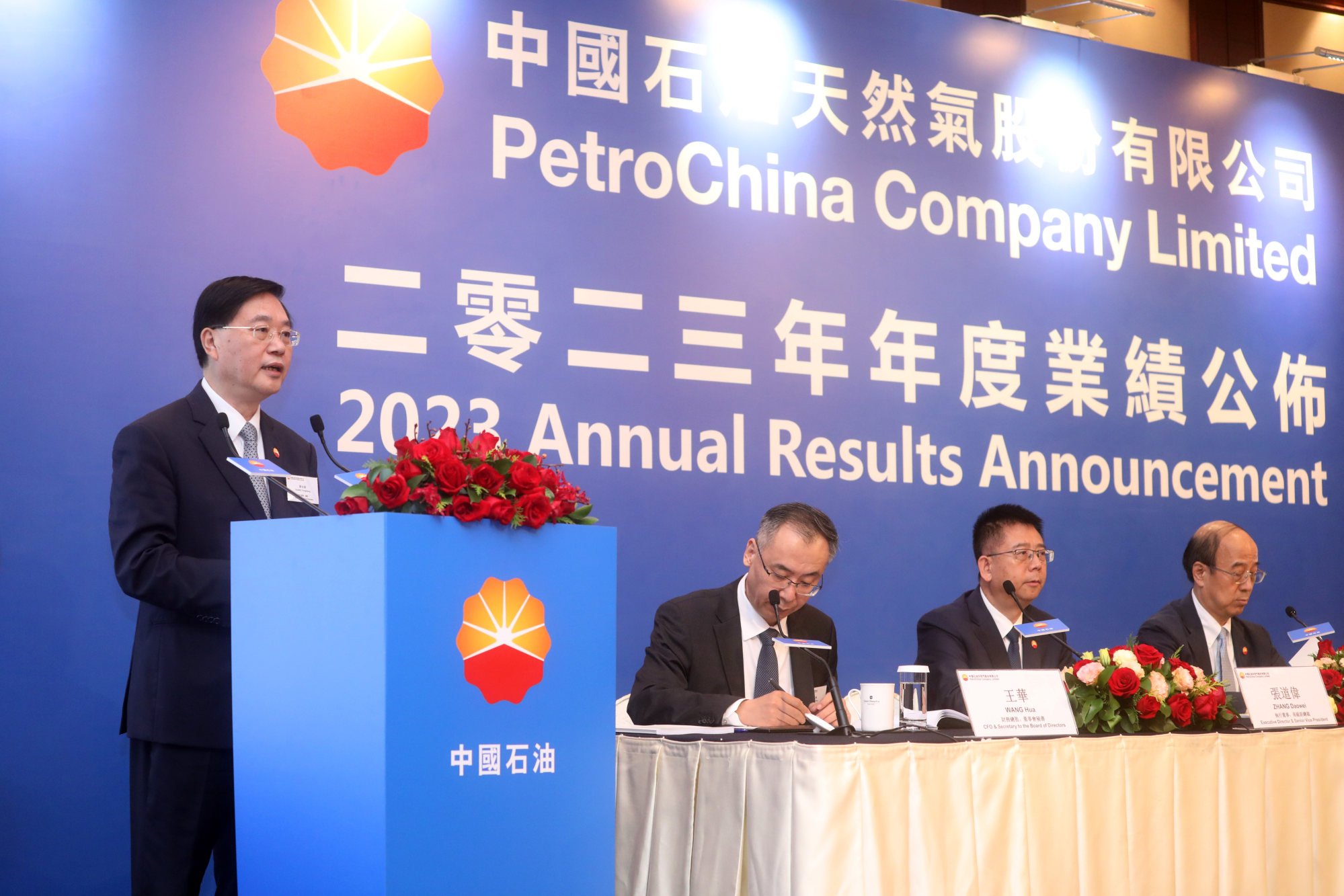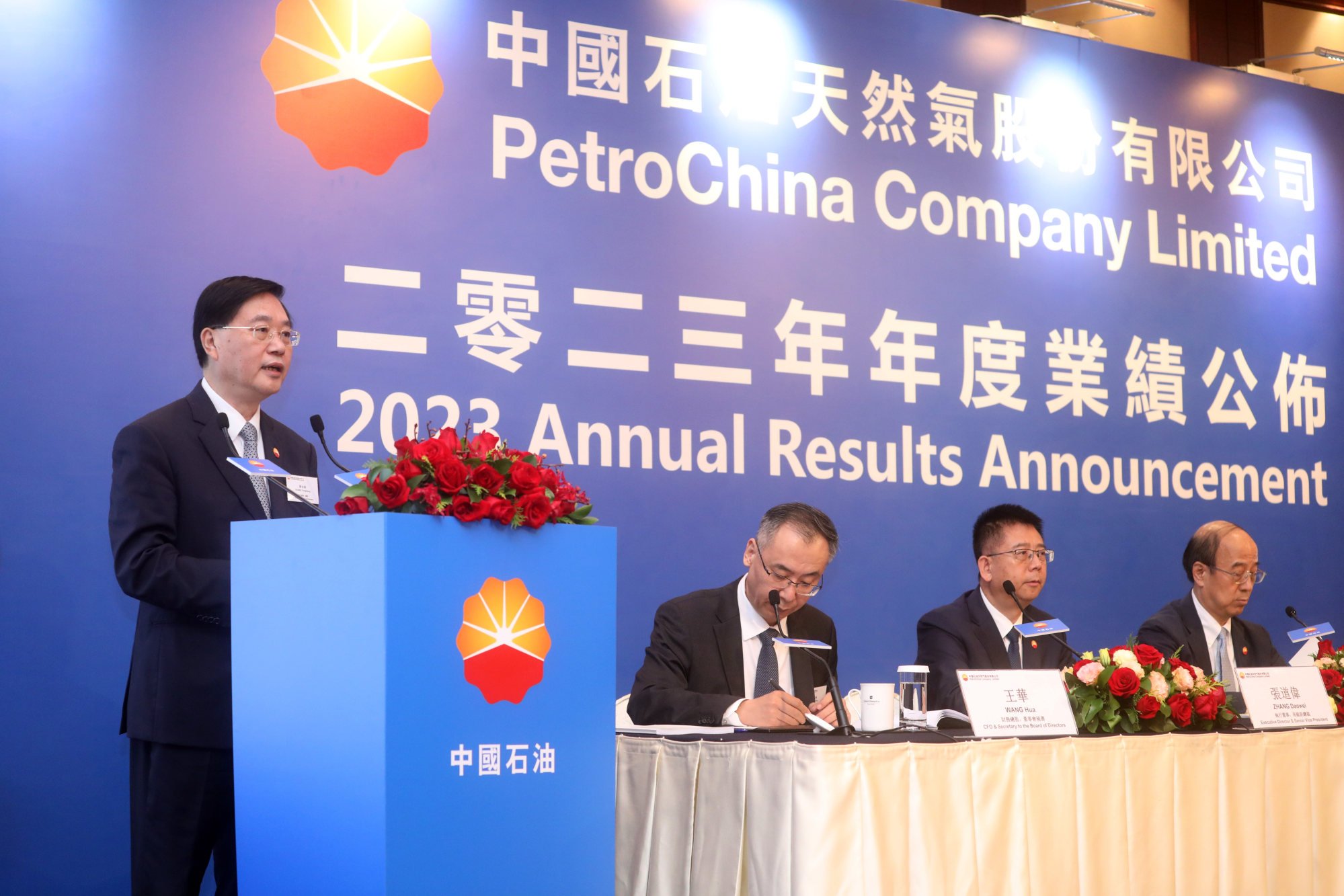
PetroChina, the nation’s largest oil and gas producer, is on track to reach its goal to peak carbon emissions next year and is confident it can double the contribution of low-carbon energy to total output capacity over two years, its top leaders said.
As it reported its annual results on Monday, the Beijing-based energy titan unveiled a new target of having low-carbon energy account for 7 per cent of total energy production capacity by next year, up from 3.6 per cent last year. Previously, the company has said it aims to have low-carbon energy account for a third of total output capacity by 2035, rising to 50 per cent by 2050.
“We are accelerating our effort on a batch of low-carbon energy projects, some of which are being implemented while others are in the approval process,” Huang Yongzhang, the company’s president and executive director, said on Wednesday. “By optimising the production processes and through electrification of energy supply, we are on track to achieve our goal to peak emissions by around next year.”
PetroChina’s total greenhouse gas emissions – those traceable to its own operating activities and externally procured energy – rose 6.6 per cent to 171.18 million tonnes of carbon-dioxide equivalent last year, compared with 2022, nearly matching the pre-pandemic level of 174 million tonnes in 2019, according to its latest sustainability report.

Huang said the higher emissions were due to revamps to reduce refined oil output and lift chemical production amid reduced demand due to China’s electrification of road transport.
“However, decarbonisation is high up on our agenda, and management’s internal performance evaluation includes results on energy consumption and emissions reduction,” he said.
PetroChina posted an 8.3 per cent year-on-year increase in net profit to 161.15 billion yuan (US$22.3 billion) for 2023, as higher returns from natural gas distribution and fuel marketing more than offset lower profits for oil production, refining and chemical production.
Emissions reduction of 10% in reach for China steel sector next year
Emissions reduction of 10% in reach for China steel sector next year
This year, the energy giant plans to lift domestic crude oil output by 0.1 per cent. Output of natural gas – which has a carbon footprint that is a quarter lower than that of petroleum – is expected to rise 4.3 per cent after increasing 5.5 per cent last year. Oil refining throughput is expected to edge up by 0.4 per cent.
By 2033, PetroChina aims to ramp up low-carbon energy production and procurement to a scale sufficient to meet the entire energy needs of its production facilities, said Chairman Dai Houliang.

“We are incorporating measures to control both energy consumption and carbon emissions in our projects to meet our climate goals,” he said.
For example, when building a petrochemical expansion project in the Xinjiang Uygur autonomous region in northwest China, the company will install pilot facilities to capture the carbon dioxide and inject it into oilfields to boost production, he added.
In 2023, PetroChina signed new contracts to power 47.3 million square metres of building floor space with geothermal energy. This year, it aims to secure contracts covering 30 million square metres.
It also aims to capture and inject more than 1.8 million tonnes of carbon dioxide into oilfields this year, up from 1.59 million tonnes last year.
The news is published by EMEA Tribune & SCMP Follow our WhatsApp verified Channel
Follow our WhatsApp verified Channel









